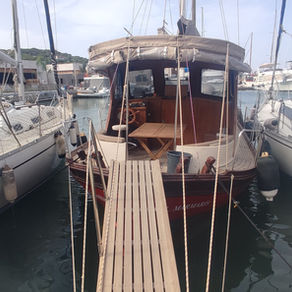Safety Equipment and Emergency Procedures in Maritime
- marmaristms

- Aug 15
- 2 min read
Safety at sea is the top priority to protect life and respond effectively in case of possible accidents. The safety equipment you must have on your boat and the procedures to follow during emergencies are fundamental elements for a smooth maritime experience.
Safety Equipment
Life Jackets
Appropriately sized life jackets must be available for every passenger.
It is preferred that they are fluorescent and reflective for easy visibility on water.
Before use, life jackets should be checked for integrity and cleanliness.
Life Rings and Ropes
Life rings should be kept ready to throw to persons who fall overboard in emergencies.
The ropes attached to life rings must be sturdy and well-organised.
Fire Extinguishers
Fire extinguishers, checked annually, should be placed in proper locations on the boat.
Their operational condition and fullness must be regularly inspected.
Emergency Signals
Flares, smoke bombs, signal rockets, and other emergency signalling devices must be available.
If these items have not been used for a while, their effectiveness must be verified.
First Aid Kit
A comprehensive first aid kit suitable for basic medical needs should be present on the boat.
Missing materials should be replenished periodically, and expiration dates should be monitored.
Emergency Procedures in Maritime
Preparation of Emergency Plan
Boat users must learn an emergency plan that involves the entire crew.
The plan should cover various scenarios such as man overboard, fire, accidents, and illnesses.
Communication and Distress Call
Users should know how to operate communication devices like VHF radios and EPIRB (Emergency Position Indicating Radio Beacon).
Accurate and rapid information transfer is vital when needed.
Wearing Life Jackets and Evacuating the Injured
Wearing a life jacket in danger is a compulsory and immediate action.
A plan must be followed for the safe evacuation of injured and sick passengers.
Fire Fighting
Early intervention must be done using fire extinguishers.
If the fire grows, cabins should be closed off to cut the oxygen supply.
Accident and Emergency Drills
The crew should conduct emergency drills at regular intervals.
Such drills improve response time and reduce the risk of errors.
Conclusion
Having complete safety equipment and knowing emergency procedures in maritime is lifesaving in potential accidents. Planned preparation and regular checks ensure personal safety and help prevent technical failures. Being prepared at all times at sea is essential for safe and enjoyable sailing.









Comments